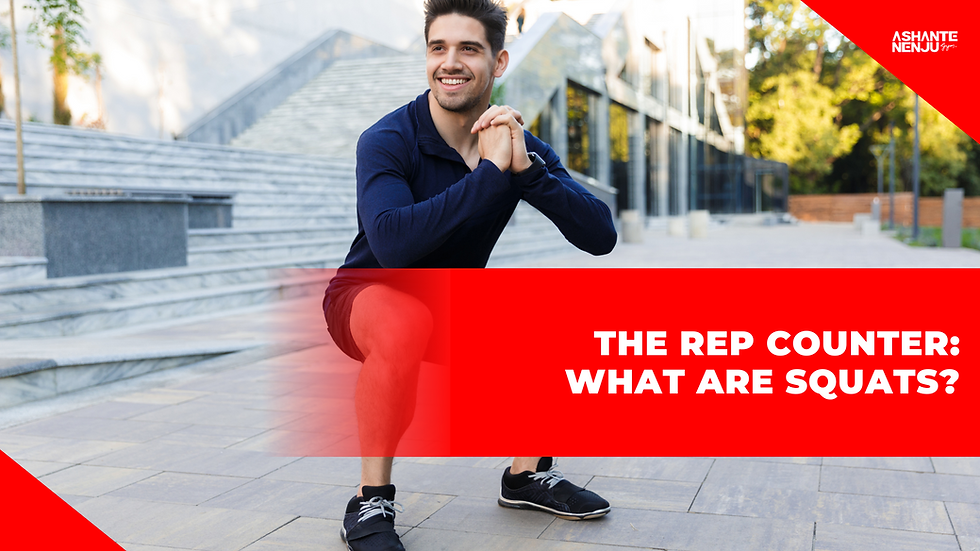The Rep Counter: What Is A Deadlift? We Demystify This Popular Workout!
- Ashante Nenju

- Dec 21, 2023
- 2 min read

At Ashante Nenju, effective and safe weightlifting techniques are important. The deadlift, often misunderstood and overlooked, is a powerhouse of a workout.
As a result, we are starting The Rep Counter series to take the confusion out of different workout styles to help our readers better understand what they are for.
In the first blog in this series, we aim to explore the deadlift and highlight its benefits for muscle growth and strength building.
What Is A Deadlift?
The deadlift is a weightlifting exercise where one lifts a loaded barbell off the ground to the level of the hips and then lowers it back to the ground. It is known for its simplicity and the profound impact it has on building strength.
The deadlift, one of the most fundamental and ancient exercises, traces its roots back to the earliest days of weight lifting. Its origin is difficult to pinpoint precisely, but it likely emerged alongside other basic lifts as humans began lifting heavy objects for strength and competition.
Historically, the deadlift was not formalized as a sport but rather used for practical strength-building, often involving lifting heavy stones or similar objects. The term "Deadlift" itself refers to the lifting of dead (non-moving) weight from the ground, a straightforward yet physically demanding task.
Over time, the deadlift evolved, becoming a key component of strength training and competitive lifting. Its popularity surged in the 20th century, particularly with the rise of powerlifting as a sport, where it was adopted as one of the three core lifts alongside the squat and bench press. The deadlift's simplicity, requiring minimal equipment and mirroring natural human movement, has contributed to its enduring place in both athletic training and fitness regimes worldwide.
What Makes Deadlifts So Great For Muscle Engagement and Growth?
Full Body Workout: The deadlift engages multiple muscle groups, including the glutes, hamstrings, lower and upper back, core, and forearms. This comprehensive engagement is beneficial for overall muscle growth and development.
Hypertrophy: Regular deadlifting contributes to muscle hypertrophy, which is essential for muscle growth and increasing muscle mass.
How Do Deadlifts Help With Strength Building?
Core Strength: Deadlifts are incredibly effective in building core strength, which is pivotal for overall athletic performance and injury prevention.
Functional Strength: The exercise mimics everyday movements, enhancing functional strength that translates into daily activities.
What Is The Correct Technique To Deadlift Safely?
Proper Form: Ensuring the right form is crucial to prevent injuries. It involves a neutral spine, correct hip and knee alignment, and a firm grip.
Progressive Overload: Gradually increasing the weight allows for consistent strength gains without overexertion. On a related note, are you looking to calculate your Rep Max figure? Why not try our free helpful 1rm calculator?
For a better visualisation on the correct form, watch the video below:
When you are done with your deadlifts, a post-workout stretch will help to keep your hips and surrounding areas mobile.
The deadlift is a foundational exercise with numerous benefits. Whether you’re looking to build muscle, increase strength, or improve functional capabilities, incorporating deadlifts into your routine is a game-changer.
.png)


